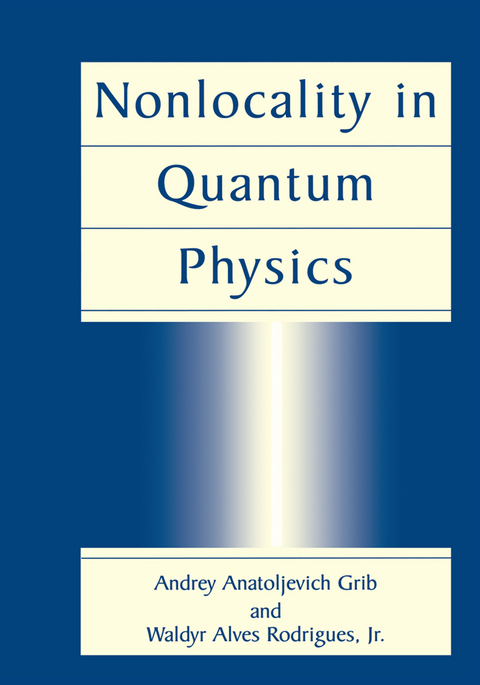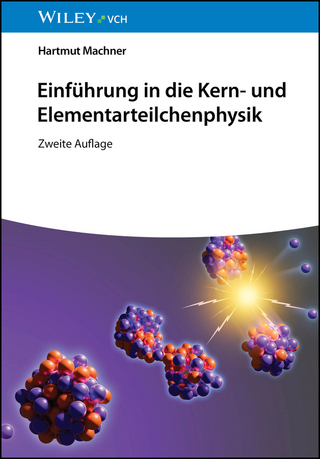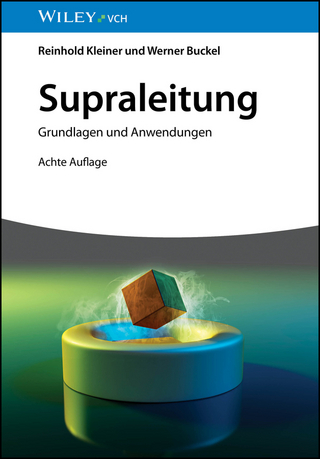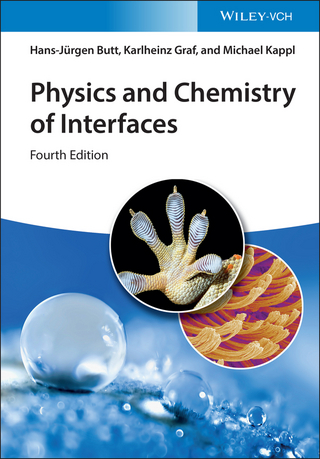
Nonlocality in Quantum Physics
Kluwer Academic/Plenum Publishers (Verlag)
978-0-306-46182-8 (ISBN)
The nonlocality phenomena exhibited by entangled quantum systems are certainly one of the most extraordinary aspects of quantum theory. This book discusses this phe nomenon according to several points of view, i.e., according to different interpretations of the mathematics of the quantum formalism. The several interpretations of the Copenhagen interpretation, the many worlds, the de Broglie-Bohm, quantum logics, the decohering by the environment approach and the histories approach interpretations are scrutinized and criticized in detail. Recent results on cryptography, quantum bit commitment, quantum erasers and teleportation are also presented and discussed. In preparing the book we benefited from discussions with many people, but we would like, in particular, to express our gratitude to Professor B. d'Espagnat for his useful comments and suggestions. We are grateful also to Ms. L. Gentry EI-Dash for the English revision, to Dr. 1. E. Maiorino for the production of the figures and a careful reading of the manuscript, and for the statI of Plenum for advice and for having produced a nice book. Finally, the authors thank FAPESP (contract no. I 99612657-0) for a grant making this book possible. A. A. ORIB AND W. A. RODRIGUES, JR.
1. Introduction.- References.- 2. Fundamentals.- 2.1 The rules of the game.- 2.2 The whole and its parts.- 2.3 Classical limit and decoherence.- 2.4 Proofs of the frequency interpretation.- References.- 3. How ? Collapses.- 3.1 The problem.- 3.2 Collapse and unitary evolution.- References.- 4. Bell’s Inequalities.- 4.1 The Einstein, Podolski and Rosen (EPR) argument.- 4.2 D’Espagnat’s version of Bell’s inequalities.- 4.3 Stapp’s formulation of Bell’s inequalities.- 4.4 Bell’s proof.- References.- 5. Copenhagen Interpretation.- 5.1 Absence of quantum objects.- 5.2 Objectively existing potentialities world.- References.- 6. Many Worlds Interpretation (MWI).- 6.1 The role of the observer.- 6.2 Nonlocality.- 6.3 Criticisms.- References.- 7. Quantum Logic (QL).- 7.1 Proposal.- 7.2 Hasse diagrams.- 7.3 The birth of time.- References.- 8. Macroscopic Realizations of QL.- 8.1 Lattices and graphs.- 8.2 Breakdown of Bell’s inequalities.- 8.3 The Problem of Nonlocality.- References.- 9. Hidden Variables Theories (HVT).- 9.1 What is a hidden variables theory?.- 9.2 Von Neumann’s theorem.- 9.3 Spin 1/2 hidden variable’s model.- 9.4 Gleason’s theorem. Kochen-Specker paradox.- References.- 10. De broglie-Bohm Non. Relativistic HVT.- 10.1 Non relativistic de Broglie-Bohm theory.- 10.2 The many particle system.- 10.3 Remarks on the non relativistic BBT.- References.- 11. De Broglie-Bohm Relativistic HVT.- 11.1 HVT interpretation of the boson equations.- 11.2 The BBT interpretation of the Dirac equation.- 11.3 Relativistic BBT many-fermion theory.- 11.4 Necessity of superluminal processes.- References.- 12. Statistical Interpretation.- 12.1 Introduction.- 12.2 When is the SIQT possible?.- 12.3 SIQT × orthodox quantum theory.- References.- 13. Non-UnitaryEvolution?.- 13.1 Prigogine and Ghirardi et al. theories.- 13.2 Criticisms.- References.- 14. Histories Approach.- 14.1 What is a history?.- 14.2 Consistent histories.- 14.3 Criticisms.- References.- 15. Quantum Miracles and Cryptography.- 15.1 Greenberger et al. example.- 15.2 Hardy’s example.- 15.3 Negative experiments. Elitzur-Vaidman proposal.- 15.4 Delayed choice experiments.- 15.5 Quantum erasers.- 15.6 Quantum cryptography.- 15.7 Teleportation.- References.- 16. Where are We Now?.- References.- Appendices.- A— Set Theory and Lattices.- A.1 Main definitions.- A.2 Posets.- A.3 Lattices.- A.4 The Boolean algebra of sets.- A.5 Borel sets, measures and integration.- References.- B— Hilbert Spaces.- B.1 Definition of Hilbert Space.- B.2 Linear manifolds and subspaces.- B.2.1 The lattice of subspaces.- B.3 Dual and conjugate dual spaces.- B.4 Tensor products.- B.5 Linear operators.- B.6 Projection operators and lattice structure.- References.
| Erscheint lt. Verlag | 31.7.1999 |
|---|---|
| Zusatzinfo | X, 225 p. |
| Verlagsort | New York |
| Sprache | englisch |
| Maße | 178 x 254 mm |
| Themenwelt | Naturwissenschaften ► Physik / Astronomie ► Atom- / Kern- / Molekularphysik |
| Naturwissenschaften ► Physik / Astronomie ► Hochenergiephysik / Teilchenphysik | |
| Naturwissenschaften ► Physik / Astronomie ► Quantenphysik | |
| Naturwissenschaften ► Physik / Astronomie ► Theoretische Physik | |
| ISBN-10 | 0-306-46182-X / 030646182X |
| ISBN-13 | 978-0-306-46182-8 / 9780306461828 |
| Zustand | Neuware |
| Informationen gemäß Produktsicherheitsverordnung (GPSR) | |
| Haben Sie eine Frage zum Produkt? |
aus dem Bereich


